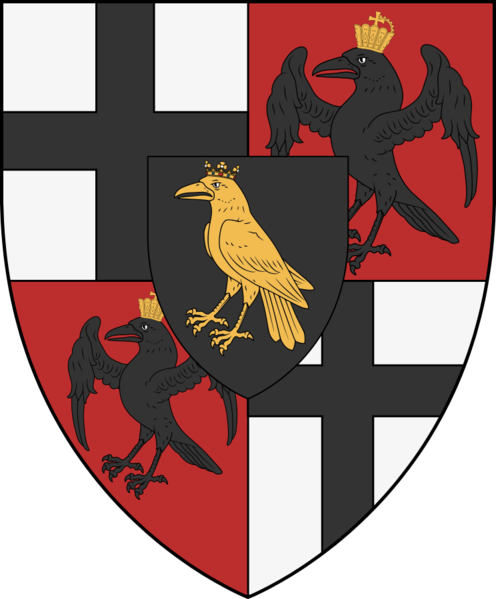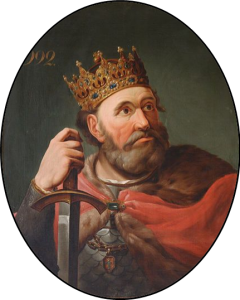
@EddyWilson2
Koeng Petyr I
Petyr var Sigmar Barbanov
Peter of Siguine Barbanov
r. 1578 A.H. – 1582 A.H. | r. 131 E.S. – 135 E.S. (4 years)
Petyr Barbanov, the founder of the modern State of Haense and its first king, is by far one the most legendary Haeseni figures in its history. Born during the late end of the War of the Ducal Coalition, Petyr was raised in exile following he and kinsmen’s banishment after the Sacking of Brelus. He did not remain outside the Orenian and Haeseni lands for long, however, and in the deal made between Otto Sarkoz and the emperor, Petyr could return. He lived in the rump state of the Duchy of Carnatia, comprising of a sizable chunk of Petyr’s family former holding of the Duchy of Haense.
The first mention of him in his own right comes from the Eighteen Years War, where the young Petyr served as cadet under Josef Vladov and later Jan Kovachev, fighting in the famous brigade known as the Carnatian Hussars. After the Peace of Avar, Petyr returned to Carnatia, where partook in the regional politics, known at the time as the tense Northern Question.
He was one of the first supporters of Britanus Vanir following his disposition by the rival heartlander Duke of Courland, where he and famous commanders Fiske Vanir, Jan Kovachev, and Rickard Barrow formed the Carnatian League, kickstarting the Riga War. Petyr successfully commanded numerous battles, including the Siege of Kraken’s Watch and the decisive Battle of Curonswald, though he is mostly remembered for his successful Sack of Riga, which formally ended the Riga War and left him in control of most of the highlander hinterlands.
Petyr further showed his talent in the later Krajian Rebellion, successfully subduing rebel hetmans under the pretender Sveneld Ivanov by 1576, later being named Lord High Governor of Hanseti and Ruska. In 1578, under intense pressure by himself and his supporters, Petyr was bestowed the titles of King of Hanseti and Ruska, to which he became crowned as later that year. In reference to his family’s traditional title, the realm at first was vernacularly called ‘Haense’.
Under his rule, countless cities and forts were created, and the population in Haense soared. His military continued to serve under the larger imperial army, and his forces led multiple victories during the concluding dunlander revolts. Petyr’s technical reign as king only lasted four years, though, and he fell to old age by 1582. By the end of his reign, his kingdom and standing army had reached quadruple the size of their formers, and the first true city- Karlsburg- had been founded.
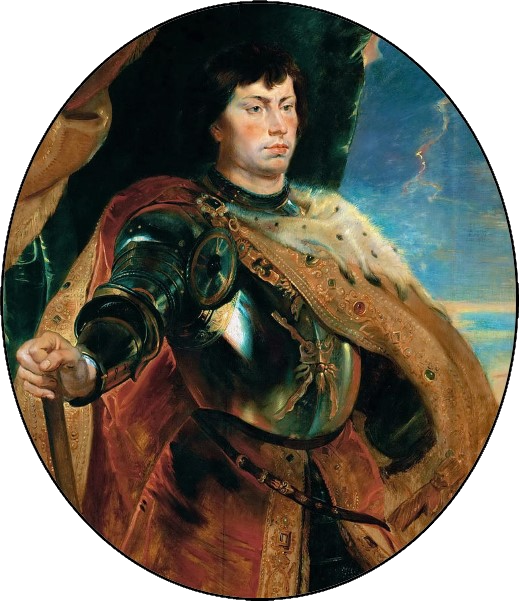
@seannie
Koeng Andrik II
Andrik Otto var Petyr Barbanov
Andrew Otho of Peter Barbanov
r. 1582 A.H. – 1586 A.H. | r. 135 E.S. – 139 E.S. (4 years)
As son and later crown prince to his father, Andrik was extremely popular by the Haeseni military and nobility alike. He was known for his charismatic nature yet was prone to rash thinking, and in the fledgling kingdom he was cherished as another titan to succeed his father. In 1582, he was crowned to much fanfare, and the groundwork laid by his father and Palatine Rickard Barrow left Andrik a bountiful realm. Andrik was originally remembered fondly for his work in settling new villages and forts throughout his kingdom, as well as the first highway between hinterlands and the heartlands. He joined the imperial conquest of the orcish peoples, where Andrik as monarch led the vanguard in the famous Siege of San Uruk.
Andrik led multiple forced-expulsions of pagans outside his realm, even from his time as crown prince. He commanded multiple army incursions against native territories deep inland and performed numerous successful raids against them and their third-party Avarite supporters. His bold and almost arrogant nature made his movements near impossible to be predicted by his enemies, and he won many conflicts against larger numbers.
However, Andrik is most infamously known for his role in the unsuccessful and chaotic Deep Cold Uprising, where he slew the emperor John IV in his court and declared open rebellion. This move was very unpopular with some of his followers, and while half of his lords swore to him (under the leadership of Branimar Vanir), the other half declared Andrik insane. The powerful noble Sergey Kovachev, a staunch imperialist, captured the royal capital of Karlsborg and forced Andrik to abdicate.
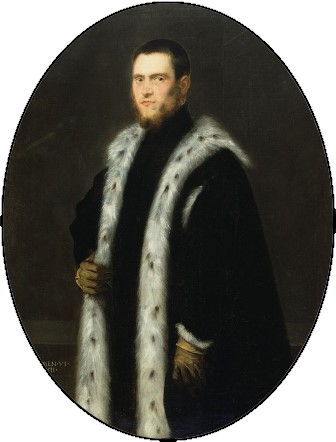
@Piov
Koeng Marius I
Marus var Andrik Barbanov
Marius of Andrew Barbanov
r. 1586 A.H. – 1611 A.H. | r. 139 E.S. – 164 E.S. (25 years)
Marius first succeeded to the throne as a babe, following his father’s abdication during the nation-wide scandal of the Deep Cold Uprising. His government was led by his uncle Karl Sigmar, who acted as Palatine and regent, and left the ultimate raising of the infant sovereign to his aunt Juliya. His uncle was unpopular with the restless nobility, and by Marius’ fourteenth nameday, and was quickly crowned king.
As monarch, Marius suffered from a divided cabinet, split between the Sergeyists and the Andrivists, and Marius had a difficult to reach bipartisan compromise between the two. Royalist powers were undermined by both factions at the time, and his officials were most of the time picked for nepotistic and political reasons rather than true talent. During this time, Marius did find success in pacifying rebellions following his father’s mess, including the Brawm Rebellion of 1600 and nativist revolts in the extreme northern regions of the kingdom. His policies of land reform struck well with the commoners, however left his nation in economic strain and unable to fully maintain the standing army of his predecessors.
Marius was also a patron of the arts and culture, and sponsored numerous artists, including the young Jakob Madonvik. He opened the first theater, the Gilded Duke, and held the first Edmond Manston play outside of the imperial capital. His patronship included many, such as the author Blakton Alvitz, poet Alistair Wailer, and his famous painter aunts, princesses Juliya and Natalia. Karlsborg became a haven of Dumatic and proto-Biharist thinkers, encompassing the larger Sanoist movement sweeping the heartlands at the time.
In the heartlands, the Coalition Wars destroyed imperial authority, and thanks to multiple diplomatic blunders, a southern coalition of forces declared war upon the State of Haense. The army under Stefan Bihar attempted to strike first, however, yet most fell at the disastrous Battle of Elba, where in only a few years Marius soon fled to exile and left to the realm in occupation. Marius lived out the rest of his life in exile, continuing to style himself as the King of Hanseti and Ruska.
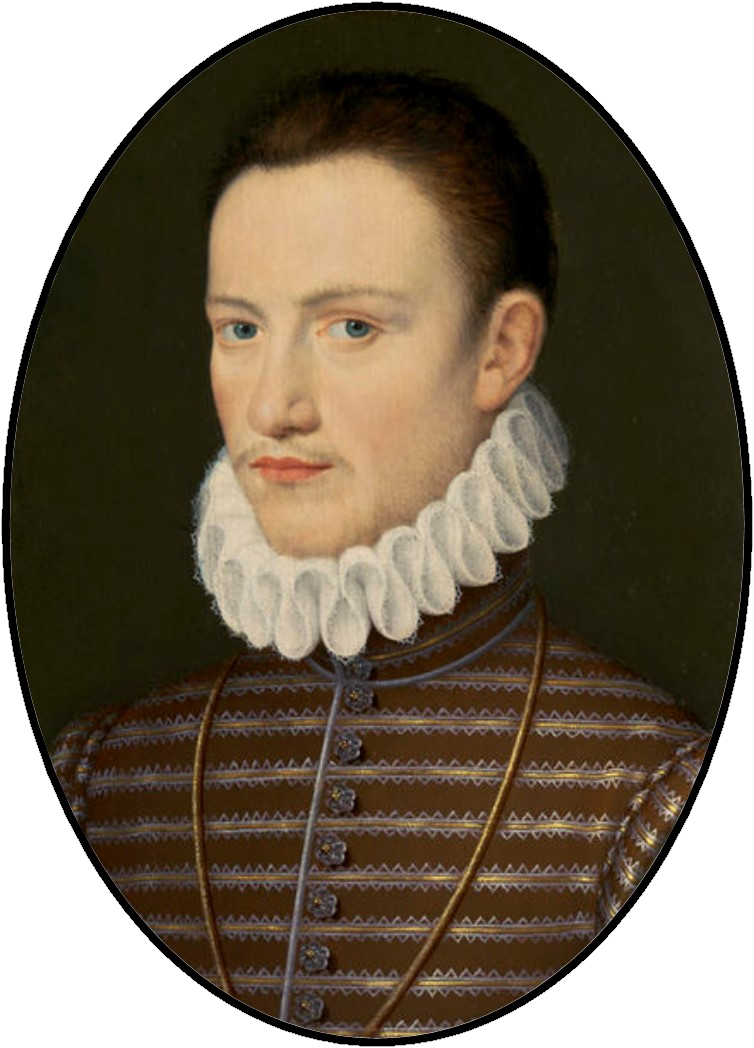
@Pureimp10
Koeng Petyr II
Petyr Marc var Marus Barbanov
Peter Mark of Marius Barbanov
r. 1611 A.H. | r. 164 E.S. (5 months)
Petyr II only ever ruled in exile, succeeding his father Marius for only a short time. Before his death, however, the Greyspine Rebellion had begun, and Petyr was prepared to return and become figurehead of the revolt. He died of the pox, however, only three months after his accession, leaving the throne to his brother.
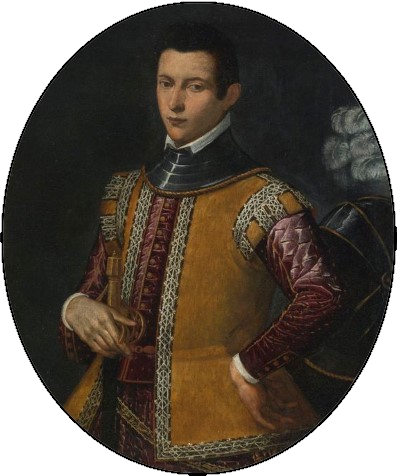
@yopplwasupxxx
Koeng Stefan
Stefan Karl var Marus Barbanov
Stephen Charles of Marius Barbanov
r. 1611 A.H. – 1624 A.H. | r. 164 E.S. – 177 E.S. (13 years)
Unlike his elder brother Petyr, Stefan was not raised to be ruled by his father nor the court, and traditionally was expected to enter the church as his counterpart took the throne in Haense. His brother’s death to the pox thrusted Stefan to kingship, to which he was elected in heated debate during the Duma of 1610. His candidacy was supported mainly by the established nobility, who wished for a weaker monarch to maintain noble autonomy.
First few years of his reign was left mainly to the nobility, and Stefan remained mostly in the heartlands in the fortress of Hochspitze. Through a deal with the Prince of Pruvia, he secured the Pruvian Inheritance, which included not only a large sum but control of many of the famous ‘Pruvian Banks’. This and the shrewd work of his advisor and later Palatine Henrik Bihar, a new army was established in direct control of the crown, which made the nobility more prone to compromise.
Karlsburg was destroyed in the First Northern War, and without a capital, the royalist war camp during the Greyspine Rebellion soon evolved into the royal city of Alban- the de facto Haeseni capital. Veterans flocked to the restored state, and despite imperial losses in the Santegian Rebellion of 1617, the Haeseni army gained numerous victories, including the Battle of Asaili. In the spring of 1616, his army under command of Alessa Grendock and uncle Prince Otto Henrik beat back several attempts at raids by natives and Avarite mercenaries, fully pacifying them by 1620.
Stefan meddled greatly in heartlander affairs, in contrast to the isolationist views of his predecessors, and was the focal point of many conspiracies and plots. He was first revealed in the Mardon Letter of his plans for a coup d’état of the emperor John V, and later his successful uproar in removing the imperial regent Robert of Marna. There were numerous assassination attempts against his life and he fought numerous duels against political opponents, including against the former heartlander archduke Odo d’Amaury, and his most famous showdown against his rival Robert of Marna, who he fatally wounded and killed.
Stefan died a young death in 1624 due to genetic Hodgkin’s disease on his mother’s side, passing the throne to his uncle as he died without trueborn heirs. His reign marked the beginning of an era of regrowth for Haense following the disastrous Coalition Wars, which continued well into the reign of Otto III. His seemingly arbitrary political moves left Stefan a vile reputation in the heartland states, to which he gained his famous moniker by Prince Philip, ‘A foe to all Humanity’.
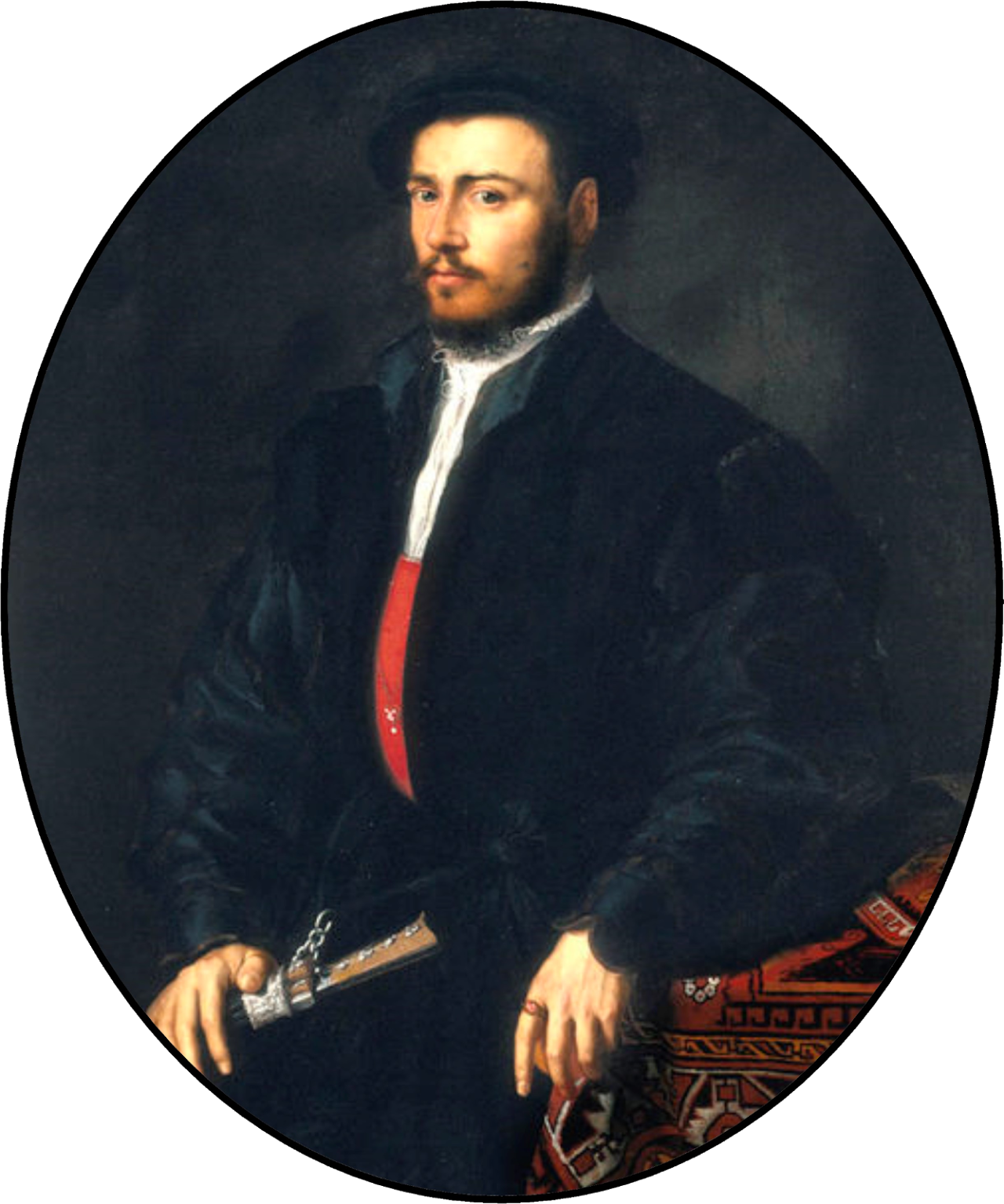
@NJBB
Koeng Otto I
Otto Henrik var Andrik Barbanov
Otho Henry of Andrew Barbanov
r. 1624 A.H. | r. 177 E.S. (1 month)
Most of Otto’s life was in service to the crown as prince and commandant, fighting in nearly every war since his brother Marius took the throne. The failures of the First Northern War sent Otto reeling, and through most of the period he remained as an outlaw soldier, raiding the occupier’s settlements and supply trains. During the decisive Second Battle of the Rothswald, he commanded the left flank and fought with valor on the field. He and Alessa Grendock commanded the Haeseni cavalry during the numerous imperial wars, such as the Santegian Rebellion, and retained Haeseni forces despite imperial losses.
He took the throne after the death of his nephew and ruled a paltry month. Haense continued its flourish under Stefan and Otto maintained the peace following the transition. His eldest son, also named Otto, would succeed him as monarch.
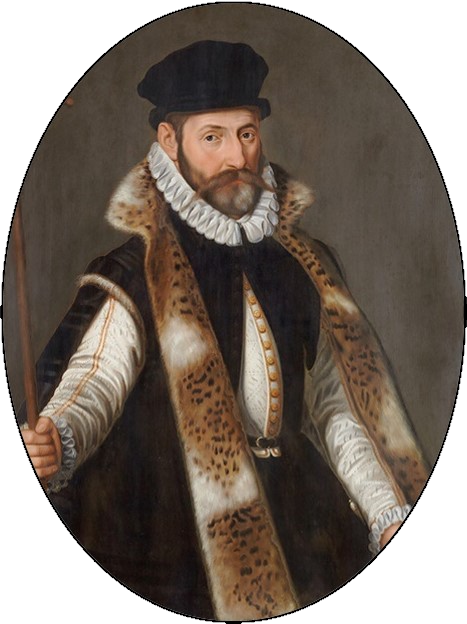
@Pureimp10
Koeng Otto II
Otto Georg var Otto Barbanov
Otho George of Otho Barbanov
r. 1624 A.H. – 1644 A.H. | r. 177 E.S. – 197 E.S. (20 years)
Before his rule, Otto George served as a courtier in the restored Haeseni court and worked as a diplomat under the Palatine Henrik Bihar. He was known for his humility and strict adherence to moral doctrine, which clashed greatly with his cousin’s more extravagant court. Otto maintained a close circle of advisors and friends, mostly of ordained clergy, which included the future pontiff Everard IV. In his father’s three years, Otto served as crown prince with dour respect, creating the record-long sixteen-hour hymn for his elevation as heir.
Otto ascended to the throne in 1627, and his reign saw Haense continue its economic and cultural boom. He, as a committed Canonist, created many royal hospitals and institutions of faith within Haense, as well as the first irrigation system stretching across the Rothswald and Wickswald. Lavish donations were bestowed upon canonist charities and orders within Haense, and Otto encouraged a theological revival in Haeseni sciences. To pay for much of this, Otto II cut down spending on the armed forces and military.
Haense maintained relatively peaceful throughout his reign, except the brief of Vasiland by dwarven forces in 1635, where the army faced a considerable loss when allied with a coalition of fellow imperial vassals and dwed loyalists. In the beginning, Otto’s management of the army led to few blunders, such as the controversial dismissal of commandant Cullen Valrein, though by the end of his promotion of talented military minds such as Berengar Helvetz and Geralt Rauen led to sizable martial influence. Otto also joined the Third Crusade in coalition with the heartlander states, successfully besieging and capturing the pagan capital in the process.
Towards his final years, he finally unveiled and started construction upon the planned city of Markev- a new royal capital to replace the cramped and poor-looking Alban. This took considerable fortune, though his strategic placement upon the River Czena allowed for better trade through river travel. He died in nthe city he created and was succeeded by his son Otto Stefan.
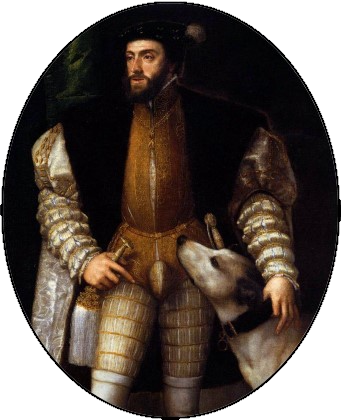
@NJBB
Koeng Otto III
Karl Marus var Otto [III] Barbanov
Charles Marius of Otho [III] Barbanov
r. 1644 A.H. – 1655 A.H. | r. 197 E.S. – 208 E.S. (11 years)
With a newly-constructed capital from the previous rule of his father, Otto Stefan’s blooming years as monarch were fruitful. Markev prospered under the diligent administration of the newly-appointed Lord Ruslan Amador, with trade along the River Baltas-Czena, especially with the river-port of Belvitz, making the city one of the wealthiest in humanity. His newly-wed wife Ingrid Sarkoz was popular with the commoners, and since the turmolous beginnings of the Ale Riots in the 1600s, the realm was finally in a state of peace. He reversed funding cuts to royal forces done by his father in a military build-up between themselves and Renatus, putting strain upon the royal treasury.
Otto favored the arts and commissioned many public works. He and his Palatine Robert Bihar attempted to modernize the Haeseni nation and reconstruct many of the haphazard sites made following the Greyspine Rebellion. He created the first royal parks and named the black-coat crow the national animal. Universities also continue to flourish, and under Otto especially who gave massive sums to benefit their studies. Arcane arts especially became popular, and under him the first schools of magic were formed.
Diplomacy soured between Otto’s government and the heartlander states, such as Renatus and Marna, and in response Haense attempted to form its own coalition under the Czena Confederation. Conflict first broke out in 1653, and in the beginning Haense experienced some success. Under the leadership of commandants Geralt Rauen and Jan Wick, they won strategic victories at both the First and Second Battles of Stallion’s Hill and the Battle of the Dam. Lack of a central leadership within the coalition, however, stopped any progression.
Assaults upon Curon, one of the member states, became more frequent, and the ineffective allied troops did little to stop enemy successes. Belvitz, one of Haense’s main export locations and its main importer of grain, was under enemy influence, and soon all trade from the city stopped. The large population of Haense and its lack of consistent farming effort did nothing to help, and by 1654 the city and country were in a national-wide famine. In 1655, the Great Plague broke out, devastating the nation. Otto caught this sickness and died in 1655, along with his heir Otto Josef, leaving the throne to his second son Karl Marus. The final years of Otto’s reign marked the beginning of a string of military defeats by Haense, and its diminished influence in the next few decades.
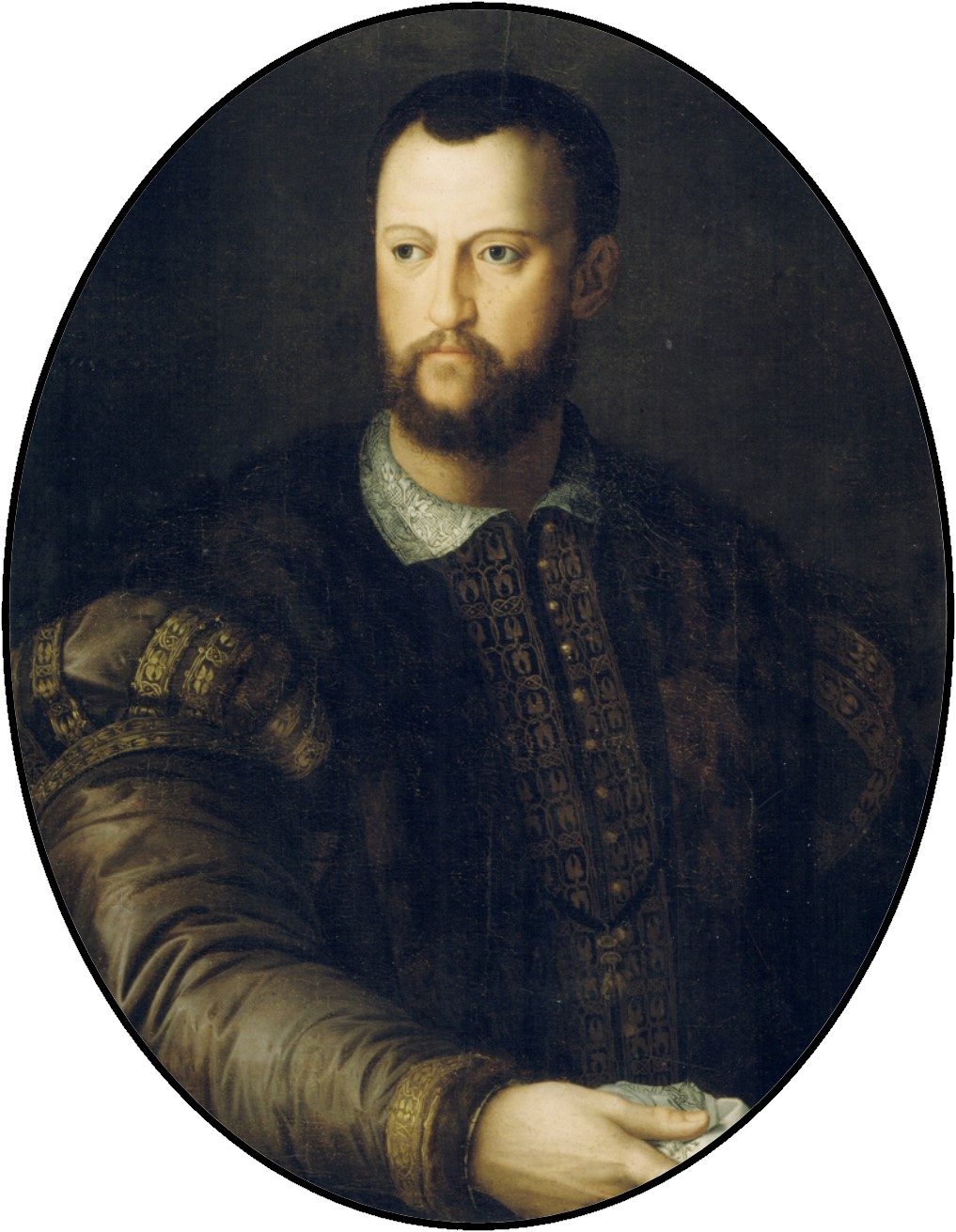
@cruzazul
Koeng Karl
Karl Marus var Otto [III] Barbanov
Charles Marius of Otho [III] Barbanov
r. 1655 A.H. – 1666 A.H. | r. 208 E.S. – 219 E.S. (10 years)
Karl, unlike his father before him, was handed a nation dying of famine and exhausted from war, with a restless nobility. By 1656, the Czena Confederation officially became defunct, as numerous states either left or were conquered, as in the case of the Principality of Curon in late 1655. Haense and the remaining states reformed into an alliance, which began to include non-human and pagan states, much to the ire of Karl’s nobility.
He was unable to reverse the military losses from before, and the allied coalition suffered numerous defeats, most importantly the Storming of Cyrilsborg and Siege of Ruriksgrad in 1662. Karl was able to keep the enemies from fully crossing the Czena River and entering Haense proper, creating many dug-out forts along the river in defense. He commanded much of the military works personally and left control of the city in the hands of his Palatine Franz Bihar.
By 1665 the war had reached a stalemate, and Karl remained on the defensive. The city did little recovery, and Franz Bihar maintained his work in suppressing liberal radicals popping throughout the city. Briefly in early 1666, the palace was stormed by peasantry, though beaten off by soldiers under command of Franz. Karl in 1666 died childless, as he never took a wife, and the state entered a succession crisis.
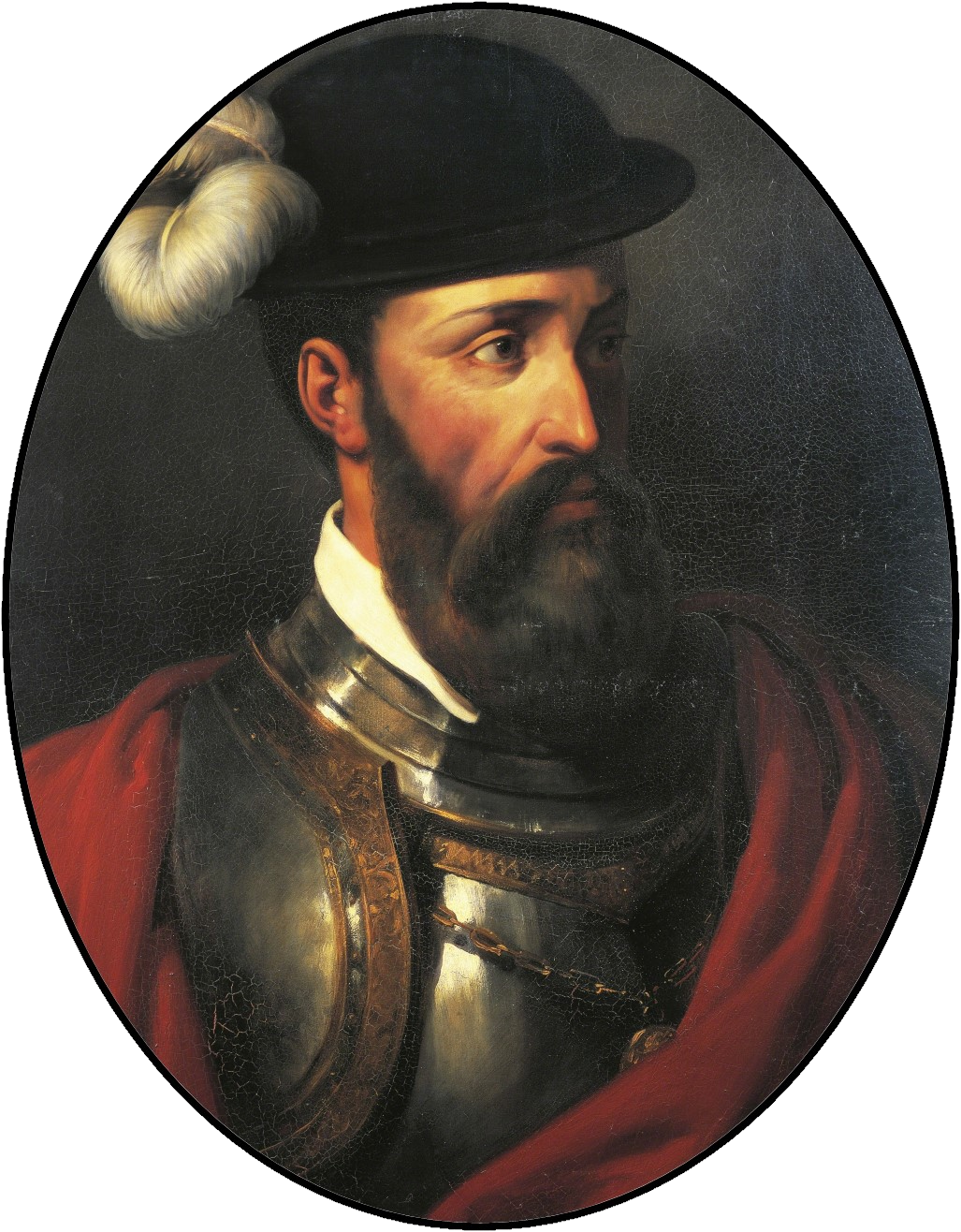
@Birdman
Koeng Franz
Franz Jakob var Henrik Bihar
Francis Jacob of Henry Bihar
r. 1666 A.H. | r. 219 E.S. (2 months)
Franz seized control of the government shortly following the death of his cousin, and shortly proclaimed him regent. Only after one month, he fully couped the state and proclaimed himself king before the duma could be called. Franz’s history in the capital and the loyalty of the military stationed there allowed him intense sway over the lords, who begrudgingly agreed to his accession. During his coronation, however, the city was surprise-attacked by a sizable blitzing force, and Franz was captured in the defense. Stating his refusal to bend the knee, he was executed by his captors, and the throne passed to his nephew.
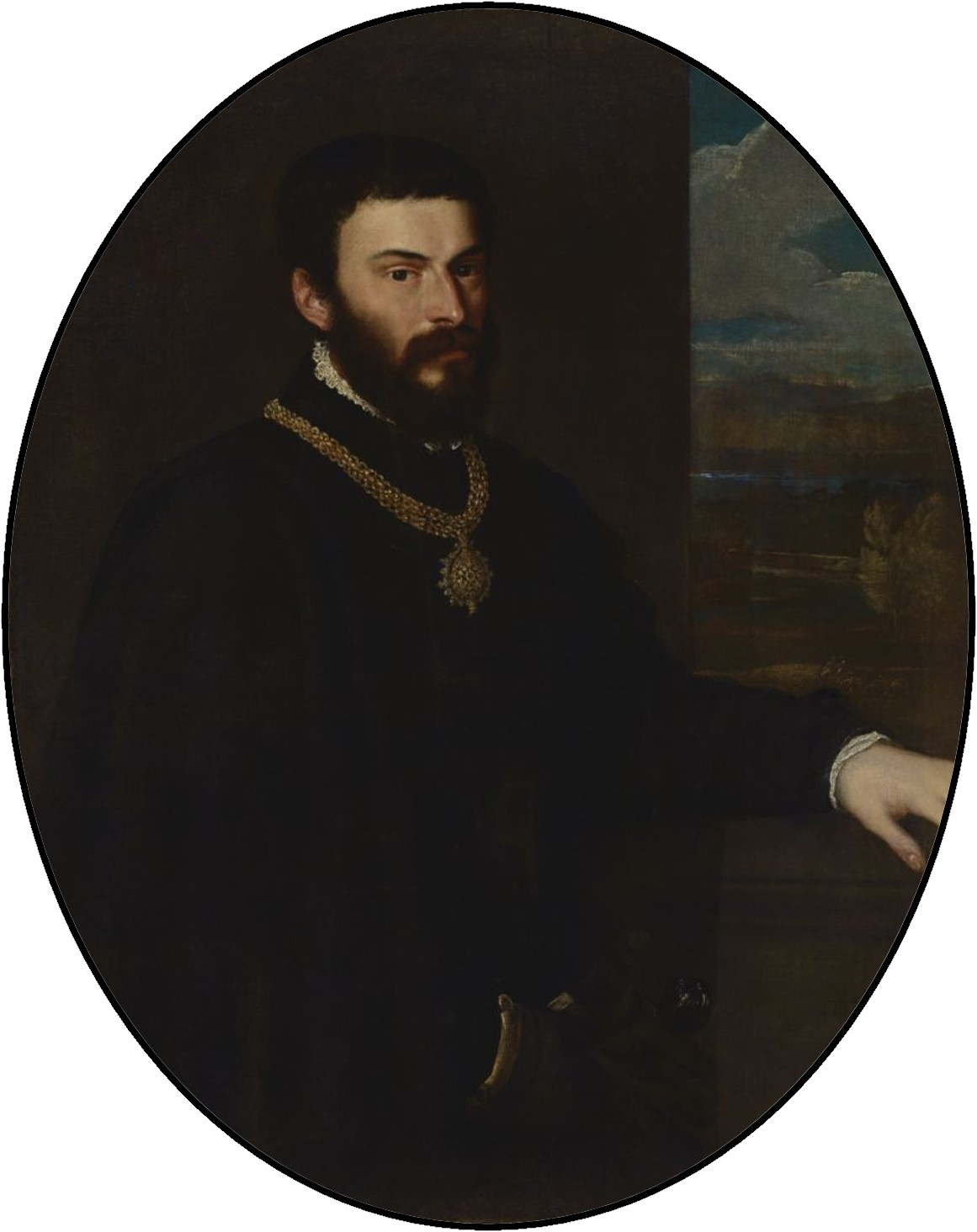
@Ark
Koeng Sigmar I
Sigmar Lothar var Robert Bihar
Siguine Luther of Robert Bihar
r. 1666 A.H. – 1682 A.H. | r. 219 E.S. – 235 E.S. (16 years)
Sigmar took the throne following the death of his uncle, to which the duma did not contest. He attempted a policy of appeasement with the heartlanders, and through diplomatic work, lifted the embargo on Haense and allowed grain shipment back into Markev. The city recovered from its recession and the economy went positive once again. With the famine relieved, the population slowly began to recover within the urban cities.
His attempts at military conquest, despite his success in diplomacy, was not as graceful. Sigmar received a damaging blow at the Battle of Karl’s Hill, and put ravaging repercussions upon the country. He swore under the Renatus state in 1678 and reformed an imperial state, formally ending all hostilities between the two countries. He allowed a freer reign for the nobility, and much of the land was granted or fell under control of powerful barons. Royal power suffered, and the nobility gained massive influence over the affairs on the government.
Sigmar would die in 1681 of a disease for the throne to pass to his son, Robert.
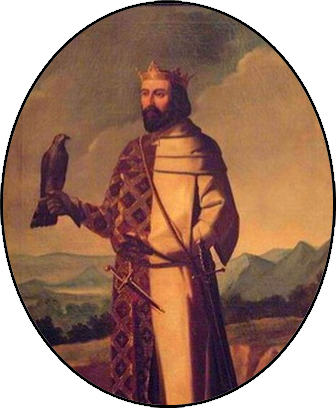
@JuliusAakerlund
Koeng Robert
Robert Lothar var Sigmar Bihar
Robert Luther of Siguine Bihar
r. 1682 A.H. – 1707 A.H. | r. 235 E.S. – 260 E.S. (25 years)
Robert Lothar Barbanov-Bihar (born 1666) was the son of Sigmar I Bihar and Sophia Chivay. Robert would marry Elizaveta Ruthern who would become his Queen-Consort. Robert’s long reign was mainly defined by the revival of Markev and the reclamation of Crown Authority by the central government. Robert removed the old councilors of his father and made a new council handpicked by him, which returned power to the king from the nobles. He would return the ducal title of Carnatia to the re-emerging House Kovachev and Henrik Kovachev who served in his government.
Robert participated in the Third Atlas Coalition War alongside Emperor Aurelius. This war saw the reclamation of the County of Ayr from the Arberrang pagans. Robert returned the lands to Marius Baruch in good faith. The rest of Robert’s reign was quiet and quite peaceful. Robert spent his time hosting feasts and festivals for his people getting to know them, both common and noble alike. For these jovial acts, he received the Moniker “The Kind”.
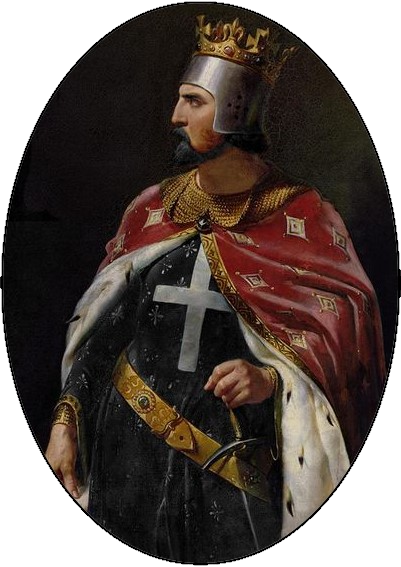
@Imperium
Koeng Marius II
Marus Demitriyus var Robert [I] Bihar
Marius Demitrius of Robert [I] Bihar
r. 1707 A.H. – 1719 A.H. | r. 260 E.S. – 272 E.S. (12 years)
Marus Demetrius Barbanov (born 1683) was the son of Robert I Bihar and Elizaveta Ruthern. Marus would marry Klaudia Vanir who would become his Queen-Consort. Marus began his reign in Arcus with a conflict against the Kingdom of Curon. Dimwitted Curonian Vassals could not tell where their land ended and where Haense’s began, which caused them to settle on Haeseni land North of the Haeseni Capital of Reza. King Marus requested a Parley with King Wilhelm, but the dolt ignored his request. King Wilhelm then accused Marus of planning to wage war on Curon using the mercenary group called the Reivers, and thus the matter was then taken up by the Imperial Government and Emperor Antonius. This culminated with the Warwick Resolution which ended the conflict between the pair who were on the brink of war. During Marus’ reign, he also reinstated the Royal Duma as a legislative and Advisory body for the nobility to have an active role in governance and formed the Marian Retinue, the Royal Kingsguard which is still used today.
The next issue Marus would encounter was the Adrian Conflict. In 1708, the Duma of Adria nominated King Marus as the new Duke after the abdication of Paul II. Marus now had to look over the city of Ves and the people of Adria, whilst his own people in Reza. Emperor Antonious and the Imperial State hated the people of Adria, and would send their men to harass them daily because they were thought to be harboring criminals and bandits.
In 1710, 2 years after becoming the Duke of Adria, Marus was informed of an attack on the Adria and city of Ves by the Imperial Prince Yury and his men. Marus would send a letter to Emperor Atonious demanding a trial for the rogue Prince, which was eventually held in the Imperial Capital of Helena. As the trial came to an end, clearly a kangaroo court and facade put on by the Emperor and his men, the Adrians who were attacked were called up before the Emperor and sentenced to death. Marus, shocked by the display of madness and disregard of law by the Emperor, attempted to intervene which led to a skirmish in the palace. Many were killed and injured, including Marus who took a blow. Marus would then send for peace with the Emperor in hopes of avoiding a civil war, this was accepted by the Emperor, but Adria did not have as much luck. The City of Ves was sacked by the Imperial army led by Prince Yury who set the city ablaze. This is remembered as Marus’ biggest folly, allowing his people to be attacked by a merciless oppressor.
For several years after the Yury trial, a period of peace would set on the land. After numerous acts of tyranny conducted by the Emperor and the Empire of Man, an Aeldenic ship would arrive on the coast, harboring Josef of Horen-Marna. He would confront Marus in his throne room, talking of rebellion and a plot to make Josef the new Emperor take hold. This culminated, after many meetings in Nenzing, with the Nenzing Proclamation. Emperor Antonious would dissolve the Empire of Man and two Emperors would be crowned, resulting in the War of Two Emperors.
The Marnan forces along with Haense saw a few decisive victories in the beginning, but their luck would run dry at the Siege of Helena. This was the turning point in the War where the Marna forces began to collapse on themselves. Soon, the only foe left standing to the young Emperor Godfrey II was the Kingdom of Haense and King Marus.
In 1719 still in the midst of war, the tired King Marus, who was stressed from war, was assassinated by a disgruntled Hekor Barrow in the Prikaz Palace. The assassin would later be killed by Prince Otto And Godfric Alimar. While Tumultuous, King Marus’ reign can be looked back on fondly. During this time, the people of Haense were united in their pride for their nation, and united against the Tyranny of the Empire and their allies. While Ves and Curon turned their backs on the cause like the cowards they were, Marus and the people of Haense fought back against all odds.
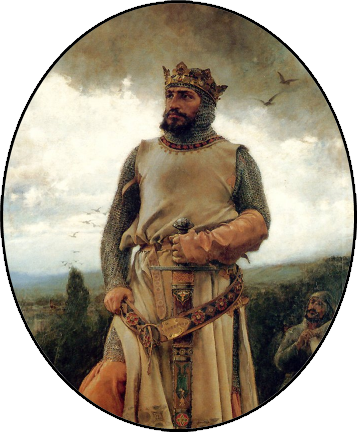
@Emenzi
Koeng Andrik III
Andrik Lothar var Marius [II] Bihar
Andrew Luther of Marius [II] Bihar
r. 1719 A.H. – 1746 A.H. | r. 272 E.S. – 299 E.S. (27 years)
Andrik Lothar Barbanov-Bihar (born 1710) was the son of Marus II Bihar and Klaudia Vanir. Andrik would go on to Marry Milena Carrion who would become his Queen-Consort. Andrik’s reign was marked by unending wars and the collapses of human institutions around Haense. Andrik inherited the War of Two Emperors from his father, and after a few years of hard war he would make a deal with Emperor Godfrey II to vassalize under his newly formed Holy Orenian Empire, and in return he preserved his kingdom. However, peace would not last as the Three Months War, the Lorraine Revolt, and the Rubern War would soon follow.
This time is referred to as The Troubles, during which Andrik would originally back Adrian Sarkozic after the fall of the Empire and the disappearance of Godfrey II and his successor. This backing did not last however, as soon he would turn his support to Alexander de Joannes who subsequently would become Alexander II, Emperor of the Holy Orenian Empire. Andrik gained his moniker “The Unyielding” for his staunch resistance to unstable imperial influence in the Haeseni affair.
Andrik III is the longest reigning King in Haeseni History, and oversaw the most prosperous time, the Golden Age of Haense. Andrik was beloved by his people, common and noble alike, for his resistance to imperial centralization and his jovial attitude. He promoted the noble class and gave them responsibility within the government, while also lifting up the peasantry and offering them a better life through service to the Crown. This was, in a sense, a Renaissance time in internal Haense, as many statesmen, authors, and playwrights came out to reinvigorate Haeseni culture. As the world crumbled around the Kingdom, Haense had a sense of security and peace. Even through the Wars, Andrik gave the people a secure stable Government and Leadership to look up to.
In 1746, Andrik would be wounded in a hunting accident. He would die in the days to come.
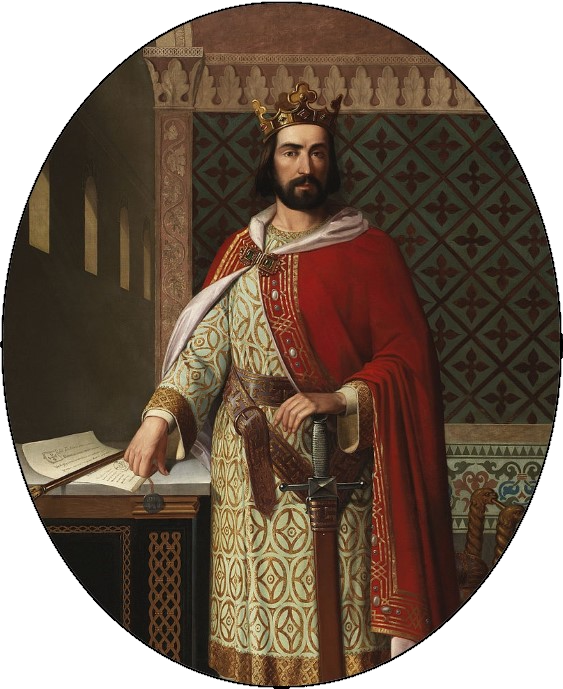
@AndrewTech
Koeng Andrik IV
Andrik Petyr var Andrik [III] Bihar
Andrew Peter of Andrew [III] Bihar
r. 1746 A.H. – 1753 A.H. | r. 299 E.S. – 306 E.S. (7 years)
Andrik Petyr Barbanov-Bihar (born 1729) was the son of Andrik III Bihar and Milena Carrion. He would later go on to marry his cousin Maya Barbanov-Alimar who would become his Queen-Consort. Andrik’s reign was rather short compared to his fathers, and spent most of his time focusing on the Rubern War and the internal toil between the Feudalists and Centralists. The Rubern War was in gridlock, as neither the morsgradi coalition or the Empire could get the upper hand. During this time, Lord Palatine Markus Kortrevich stoked the embers of infighting, apparently attempting to silence the Feudalist Ideas by using the Rubern War to halt Duma entirely, unbeknownst to the Lord Speaker Sigmar Baruch. Andrik tried to mend the bridges burnt by his Palatine by elevating Sigmar Baruch to a Duchy and Erwin Barclay to a County, while also elevating Markus Kortrevich to a Margrave. Andrik also oversaw great success in the military through his reforms.
In 1753, Andrik IV would die after being wounded fatally during a rescue mission to save his wife, Queen Maya, from a group of ruffians.
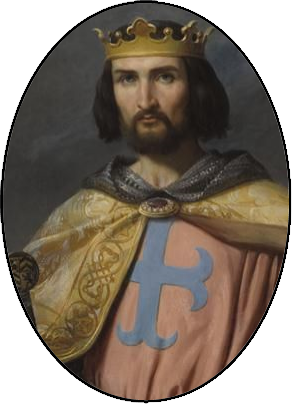
@seannie
Koeng Sigismund II
Otto Sigismund var Andrik [IV] Bihar
Otho Sigmund of Andrew [IV] Bihar
r. 1753 A.H. – 1776 A.H. | r. 306 E.S. – 329 E.S. (23 years)
Otto Sigismund Barbanov-Bihar (born 1748) was the son of Andrik IV Bihar and Maya Alimar. He would go on to marry Viktoria Ruthern who would later become his Queen-Consort. Sigismund spent half of his reign under the Regency of Tiberius Barrow until his death, then Prince Otto Sigmar Alimar. During the later half of his Regency under Prince Otto, the Feudalist nobility made a coalition, called the Valwyck Pact, to check the power and remind the heavily centralist Prince Otto that he was only the Head of State until Sigismund came of age. Prince Otto and the leader of the Valwyck Pact, Duke Petyr Baruch, came to an agreement called the Valwyck Compromise that alleviated fears from both sides as it ensured the rights of nobility and promised not to strip nobility without proper cause, and in turn the nobility would support the regent completely.
Sigismund spent most of his reign fending off the Scyfling Invasion under Bralt the Boar, though he would ultimately die before ending the invasion. During his reign, Sigismund and his now Lord Palatine Petyr Baruch would see the end of the Rubern war, gaining back the old Alimar territories, but readmitting this land became an issue as the Imperial and Haeseni authorities argued over who had the jurisdiction of the regained land.
Tensions were constantly high, and rising, with the Imperial Government as Sigismund, Petyr Baruch, and the Lord Lieutenant Nikolas Barbanov worked to find compromises with the aggressively centralized Imperial Government. Concessions were made to improve stability, including agreeing to a single peerage system which would be a main issue in the years to come. This issue greatly outraged the boisterous Sigismund, who often would make inflammatory statements that were borderline seditious about the Imperial Government.
After the outbreak of the Sutican War, where Sigismund was not informed prior by the Imperial government and Emperor Peter III, Sigismund wished to remain neutral, while rumors circulated of rebellion against the tyranny of the terrible Emperor. However, his council refused to allow this to happen, seeing the needs of Haense over personal grudges, unlike Sigismund, which caused Sigismund to eventually end his life. While his love for his people was great and blinding, his brashness and irrationality compared to that of Marus II and, without his counsel, may have bogged down Haense in a futile war for decades to come.
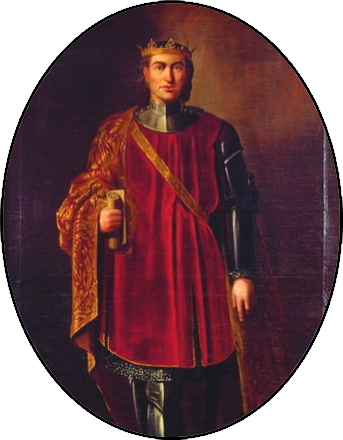
@CaptainHaense
Koeng Josef
Josef Sigismund var Sigismund [II] Bihar
Joseph Sigmund of Sigmund [II] Bihar
r. 1776 A.H. – 1806 A.H. | r. 329 E.S. – 359 E.S. (30 years)
Josef Sigismund Barbanov-Bihar (born 1769) is the son of Sigismund II Bihar and Viktoria Ruthern. Josef is married to Isabel Baruch who is now his Queen-Consort. Josef is the second child king in a row, ascending to the throne at age 7. Josef’s Regent was appointed by Petyr Baruch, Konstantin Wick served as his Regent and Lord Palatine after the stepping down of Petyr Baruch from the position. After his father’s death, there was a sense of division among the people. Some wished to fight against the Empire, others wished to stay for the greater good. Josef’s first task was to amend the division between the people, which was done after the Pontiff James II demanded Emperor Peter III end the war against Sutica.
The next task Josef and his government would face was against the Scyfings. During the first years of his Kingship he would beat the Scyfling horde and end the Scyfling War. Peace did not last long however, as now the Inferi waged war across Arcas.
Josef would take up the sword and shield of his father, and the father’s before him as he led the resistance against the Imperial Government’s fight for centralization and strippng of Autonomy from Haense. On the 11th of Amber Cold, 1786, Empress Anne I granted Haense it’s freedom after a brief meeting in the Novellen with King Josef, expelling them from the Empire. For months after, celebrations ran rampant through the streets and praise was given to Josef and his Government for gaining independence from the Empire. Josef then quickly and efficiently set up a self-sustaining government for an independent Haense.
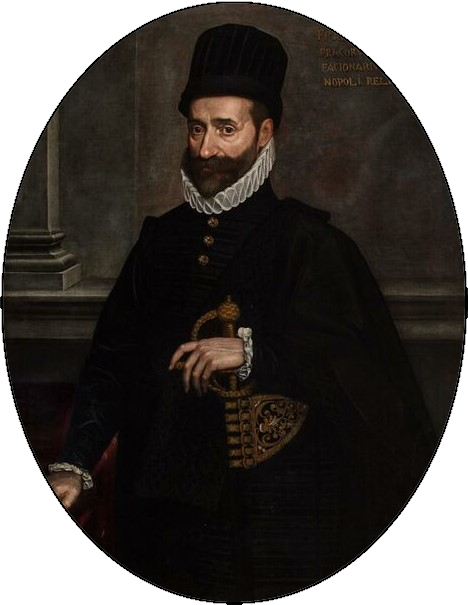
@Rudi
Koeng Heinrik II
Heinrik Karl var Josef [I] Bihar
Henry Charles of Joseph [I] Bihar
r. 1806 A.H. – 1837 A.H. | r. 359 E.S. – 390 E.S. (31 years)
Henry Charles Barbanov (Common: Henry Charles; High Imperial: Henricus Carolus; New Marian: Heinrik Karl), (11 Amber Cold, 1791–present), regally known as Henry II, is the eighteenth King of Hanseti and Ruska. Henry was born as the eldest son of Joseph I of Haense and Isabel of Valwyck thus making him Grand Prince of Kusoraev. During his tenure as Grand Prince; he assumed the position of Prince-Regent following a heart attack that incapacitated his father. King Josef I would die several months after his original incapacitation, causing the grand prince to ascend to the crown at the age of fifteen.
In the year 1805, King Joseph I, the father of Henry, fell into a coma following a heart attack. At the time, the Grand Prince was only fifteen, having just reached majority. The Prince therefore received the title of Prince-Regent to govern in the name of his father.
The reign of Henry II as King of Hanseti-Ruska began with an auspicious sign. During the coronation of the young king, as he was imbued with the Biharian Crown a large tremor shook the cathedral and all of Almaris. After a few moments, peace was restored and the king took the shaking as a sign of good-will for his reign. In the aftermath of the ceremony, it was revealed that one of the attendees, the Rex of Krugmar Zhot’rax, had arrested the diplomat of Elvenesse as an assassin. The newly-crowned King allowed for the Rex to take this diplomat back to Krugmar to be dealt with appropriately.
The first major act in the regency of Prince Henry was the Haeseni involvement in the 1806 Diet of Karosgrad–a meeting of the clergymen of the Church of the Canon to stand as a jury for the accusations against controversial High Pontiff Owyn III. During the diet, the clergy was divided into two major- and near-equally numbered factions: the faction in favor of maintaining the current pontificate (composed mostly of Albarosan and Orenian clergymen, led by Alfred Barclay, Patriarch of Jorenus), and the faction opposed to Owyn III’s pontificate (composed mostly of Haeseni clergymen, led by Cyril Cardinal St. Publius). Due to several members of the opposition faction being absent during the vote of conviction, the high pontiff was found not guilty by only a handful of votes.
It was upon this vote that Henry and the representative of the Holy Orenian Emperor, Archchancellor Franz de Sarkozy, stood from their seats and demanded they be made co-chairmen of the diet. The chairman of the Diet, Patriarch Alfred, refused to relinquish his power, as the diet was a Church affair. When the patriarch refused the demands of the king and the archchancellor, the soldiers of both nations (present to quell the possibility of riots, as had been an issue in previous church events under Owyn III) marched into the Basilica of Saint Henrik to enforce the demands of the two men.
As the soldiers of the Haeseni Royal Army and the Imperial State Army rushed into the basilica, the militia of the Church rushed to defend the loyalist clergymen, who refused to revoke the decision that had been voted for. The clergymen opposed to High Pontiff Owyn were escorted from the building by soldiers of the prince regent. As the clergymen of the opposition were escorted from the building, the loyalist clergymen attempted to leave, which the king and archchancellor ordered not to happen until another vote was cast in their favor.
The loyalists clergymen began to resist with violence, shouting that they would rather die martyrs than have the nations of Haense and Oren intervene in the trial of a high pontiff. The soldiers of the Haeseni Royal Army and the Imperial State Army reacted quickly, with force, causing the deaths of several clergymen. All those not killed were placed under arrest; excluding then-Vice Chancellor of the Church, Manfried Cardinal Providentia (future High Pontiff Jude II, successor of Owyn III), whom escaped with a collection of fellow clerics and holy knights.
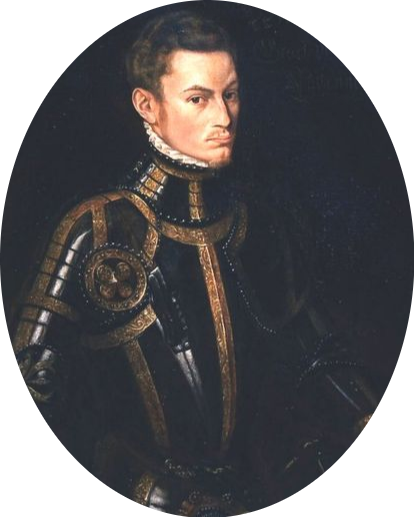 Keong Sigismund III
Keong Sigismund III
Sigmund Karl var Heinrik [II] Bihar
Sigismund Charles of Henry [II] Bihar
r. 1838 A.H. – 1873 A.H. | r. 391 E.S. – 442 E.S. (35 years)
Sigismund Karl Barbanov-Bihar (Common: Sigismund Charles; High Imperial: Sigismundus Carolus; New Marian: Sigmund Karl), (1815-1873), regally known as Sigismund III and remembered as Sigismund the Golden was the nineteenth King of Hanseti-Ruska and the first born son of King Heinrik II and Mariya of Aurveldt. With his reign lasting 35 years, Sigismund III is the longest reigning monarch to have ruled over Hanseti-Ruska.
Sigismund Karl Barbanov-Bihar was born on the 9th of the Deep Cold, 1815, in the capital of Haense, the Royal City of Karosgrad, as the eldest son to Heinrik II thus making him the Grand Prince of Kusoraev, the heir apparent to the Kingdom of Hanseti-Ruska. Some months after his birth, Sigismund’s mother, Queen Mariya, was mysteriously murdered in the King’s office in 1815, however this was later revealed over a decade later to be a convoluted means to end her marriage and escape to the Orenian Empire by faking her death.
During his early childhood, Sigismund was noted as being a recluse and rarely in the public light, instead keeping to the Royal apartments of the Nikirala Palace. Whether this was done at the behest of his father, for fear of losing his son similarly to Queen Mariya, or if it came around due to Sigismund’s own wishes, is unclear but it undoubtedly had an effect on the future King. Due to his limited access to the wider world, Sigismund had few childhood friends besides his own sister, Princess Petra, to whom he was incredibly close to throughout their entire lives. With the kind princess being his primary source of companionship, and with little influence of his stern father on him as he was busy with rulership, Sigismund grew up a far more temperate figure than King Heinrik II.
Sigismund received an education befitting a future King, being taught extensively in the subjects of politics, history, warfare, stewardship, and theology. Under the tutelage of future Grand Maer and Aulic Envoy Feodor May primarily, Sigismund progressed well with all his lessons, being an especially studious child and showing a great aptitude for writing himself, being able to convey himself well in the written word from an early age.
By far Sigismund’s favourite topic of study was history, but not for the academic practice of it. Instead he enjoyed the stories it told of bygone ages and the romanticisation of tales, taking a particular interest in the retellings of knights, folk stories and legends. Sigismund brought his passion for these into constructive changes and literary works later in his life once he was King of Hanseti-Ruska.
Though not an especially gifted swordsman himself, Sigismund was trained by one of the finest of his generation, Ailred, Duke of Vidaus, in the later half of his childhood after getting a late start. With the late Duke’s guidance, Sigismund became a capable enough swordsman and tactician, putting both to show in his reign later during the Urguani-Orenian War.
Sigismund III married Emma Kortrevich in the Basilica of Saint Henrik in 1836, officiated by the High Pontiff Everard VI. Wed two years before going on to become King, as the Grand Prince of Kusoraev the ceremony was large and lavish but by no means a surprise as the two had been courting for some years prior. The match was widely accepted as a loving and well-placed one with Emma being the sister of Count Jan Kortrevich.
Sigismund became the King of Hanseti-Ruska at the age of twenty-three following the abdication of his father, Heinrik II, in the ‘Edict of Abdication of 391 E.S’[1] in 1838, the second time ever a King of Hanseti-Ruska has abdicated and the first time for non-illness related reasons. Whilst an unusual occurrence, and potentially problematic for Sigismund that a former King still lived to be a claimant to his new throne, Sigismund was accepted very quickly and with little controversy being widely more popular than his controversial father. Sigismund III’s coronation took place in the Basilica of Saint Henrik by High Pontiff Everard VI in 1840.
 Keong Karl III
Keong Karl III
Karl Sigmar var Sigmund [III] Bihar
Charles Siguine of Sigismund[III] Bihar
r. 1873 A.H. – 1905 A.H. | r. 442 E.S. – 474 E.S. (32 years)
Karl Sigmar Barbanov-Bihar (Common: Charles Siguine; High Imperial: Carolus Sigumarid), (1846-1905), regally known as Karl III was the twentieth King of Hanseti-Ruska and the second born son of King Sigismund III and Emma of Jerovitz. With a reign of 32 years, Karl III is the second longest ruling King of Hanseti-Ruska, tied with his grandfather Heinrik II.
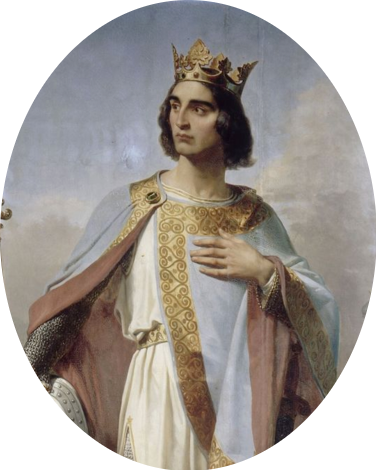 Keong Georg I
Keong Georg IGeorge Sigismund of Charles[III] Bihar
r. 1905 A.H. – Present | r. 474 E.S. – Present (Incumbent)
Georg Sigismund Barbanov-Bihar (Common: George Sigismund; High Imperial: Georgius Sigismundus; New Marian: Georg Sigmund), (1872-Present), regally known as Georg I is the twenty-first King of Hanseti-Ruska and the first born son of King Karl III and Amadea of Susa.
Georg married Esfir of Jerovitz in the Basilica of Saint Henrik in 1902, officiated by Matriarch Katerina of Jorenus and Iosif Bishop Valwyck. The two had long known to hold a mutual affection for one another but only wed when Georg was at the age of 30, an age that was unusually high for an heir to the throne to wed. There was speculation that the union was delayed for a number of years as Esfir was unsure of her willingness to one day be Queen of Hanseti-Ruska.
In keeping with previous weddings of Grand Princes of Kusoraev, Georg and Esfir’s wedding was grand with a large ceremony followed by a meal and presentations of gifts. The union was celebrated for a number of days which saw the Haeseni holiday Barovifest paired with the merriment as well as a celebratory joust and a tour of all the vassal keeps from the newly weds.
Summaries of monarch lives by Piov & CaptainHaense and later revised by Zanthuz & DrewDOOD with help from the LOTC Wikipedia
